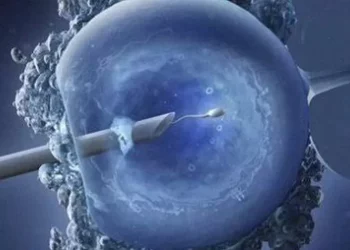Infertility affects many couples worldwide and can be a source of significant stress. While much of the focus often falls on female infertility, male infertility is a critical component that contributes to the challenge of conceiving. Understanding the percentage of male infertility and its impact on overall fertility is essential for addressing this issue effectively. This article provides a detailed overview of male infertility, its prevalence, and its significance in the context of couple fertility.
Prevalence of Male Infertility
Male infertility is a common issue in reproductive health. Data from various studies and health organizations indicates that male infertility is a contributing factor in approximately 40-50% of all infertility cases. This figure highlights the importance of considering both partners’ health when diagnosing and treating infertility.
In general, about 10-15% of couples worldwide experience difficulty in conceiving after one year of regular, unprotected intercourse. Within this group, male infertility is involved in nearly half of these cases. This means that out of every 100 couples facing infertility, around 40 to 50 cases can be attributed to issues with male fertility.
Factors Contributing to Male Infertility
Male infertility can result from a variety of factors, each affecting sperm production or function. Understanding these factors helps explain the significant percentage of infertility cases linked to male issues.
1. Sperm Production Issues
Problems with sperm production are among the most common causes of male infertility. These issues can be due to:
Low Sperm Count (Oligospermia): A reduced number of sperm in the ejaculate can make it more difficult for sperm to reach and fertilize the egg. Low sperm count is one of the most frequent issues in male infertility.
Poor Sperm Motility (Asthenozoospermia): Sperm motility refers to the ability of sperm to move efficiently. Poor motility means that sperm have trouble swimming towards the egg, reducing the likelihood of successful fertilization.
Abnormal Sperm Morphology (Teratozoospermia): Abnormal sperm morphology refers to irregular shapes or structures of sperm. This can impair the sperm’s ability to penetrate and fertilize the egg.
Azoospermia: In cases of azoospermia, no sperm are present in the ejaculate. This can result from blockages in the reproductive tract or issues with sperm production.
2. Blockages in the Reproductive Tract
Blockages or obstructions in the male reproductive tract can prevent sperm from being ejaculated. These blockages may be:
Congenital: Some men are born with structural abnormalities that obstruct the flow of sperm.
Acquired: Infections or surgeries can lead to scarring and blockages that interfere with sperm transport.
3. Hormonal Imbalances
Hormonal imbalances can affect sperm production and function. Hormones such as testosterone, luteinizing hormone (LH), and follicle-stimulating hormone (FSH) play a crucial role in regulating sperm production. Conditions affecting these hormone levels can lead to reduced sperm production or quality.
4. Sexual Dysfunction
Sexual dysfunction, including erectile dysfunction or premature ejaculation, can impact the ability to conceive. While these issues might not directly affect sperm quality, they can reduce the frequency of successful intercourse, making conception more challenging.
5. Lifestyle Factors
Lifestyle choices can significantly impact male fertility. Factors such as:
Smoking: Smoking is known to reduce sperm count and motility and increase the risk of sperm DNA damage.
Alcohol Consumption: Excessive alcohol intake can lower testosterone levels and impair sperm production.
Drug Use: The use of recreational drugs, including marijuana and anabolic steroids, can adversely affect sperm health.
Obesity: Being overweight or obese can lead to hormonal imbalances and reduced sperm production.
Environmental Toxins: Exposure to toxins, such as pesticides and industrial chemicals, can negatively impact sperm quality and fertility.
see also: Do You Know How Stis Can Lead to Infertility?
Diagnosis and Assessment
To diagnose male infertility, a thorough evaluation is required. The assessment typically includes:
1. Medical History and Physical Examination
The first step involves taking a detailed medical history and performing a physical examination. This helps identify any underlying health issues, lifestyle factors, or structural abnormalities that may affect fertility.
2. Semen Analysis
A semen analysis is a crucial test to evaluate sperm count, motility, and morphology. Abnormal results can provide insights into potential causes of infertility and guide further investigation.
3. Hormonal Testing
Hormonal testing can assess levels of key hormones involved in sperm production. This includes testosterone, LH, and FSH levels, which can help identify hormonal imbalances affecting fertility.
4. Genetic Testing
Genetic testing may be recommended if a genetic cause of infertility is suspected. Conditions such as Klinefelter syndrome or other chromosomal abnormalities can be identified through genetic tests.
5. Imaging Tests
Imaging tests, such as ultrasound, can help detect structural abnormalities or blockages in the reproductive tract. These tests provide visual information that can aid in diagnosis and treatment planning.
Treatment Options for Male Infertility
Treatment for male infertility depends on the underlying cause. Options may include:
1. Medications
Medications can address hormonal imbalances or treat infections affecting fertility. For example, hormone replacement therapy may be used to correct low testosterone levels.
2. Surgery
Surgical interventions may be necessary to correct blockages or structural abnormalities in the reproductive tract. Procedures such as vasectomy reversal or surgical removal of blockages can restore fertility.
3. Lifestyle Modifications
Improving lifestyle factors can have a significant impact on fertility. Quitting smoking, reducing alcohol consumption, maintaining a healthy weight, and managing stress can enhance sperm quality and increase fertility.
4. Assisted Reproductive Technologies (ART)
For cases where other treatments are ineffective, assisted reproductive technologies may be used. Techniques such as in vitro fertilization (IVF) or intracytoplasmic sperm injection (ICSI) can help achieve pregnancy by directly handling sperm and egg.
Conclusion
Male infertility is a significant factor in approximately 40-50% of infertility cases. It can result from various issues, including sperm production problems, blockages, hormonal imbalances, sexual dysfunction, and lifestyle factors. Diagnosing and treating male infertility involves a comprehensive evaluation and may include medications, surgery, lifestyle changes, or assisted reproductive technologies. By understanding the prevalence and causes of male infertility, couples can seek appropriate treatment and improve their chances of conception.
Related topics:



























